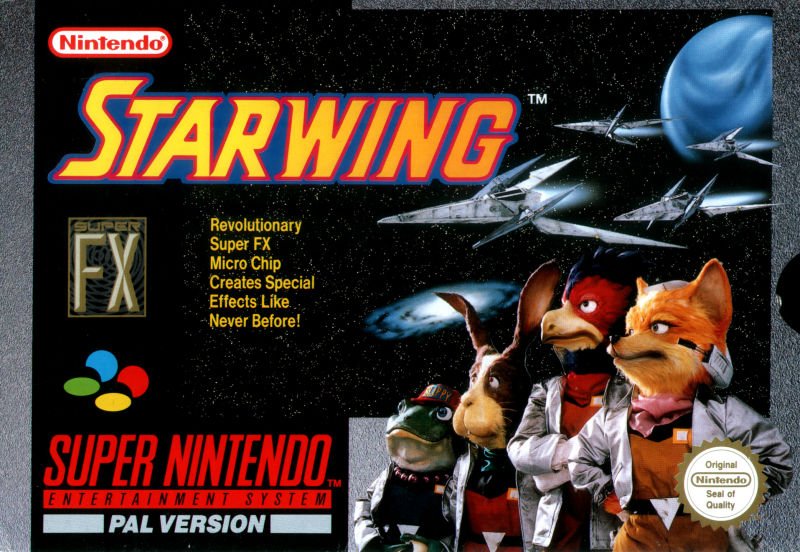
STAR FOX (STARWING)
Star Fox, released for the SNES in 1993 by Nintendo, revolutionized gaming by introducing 3D polygonal graphics to the 16-bit console era. Developed in collaboration with Argonaut Software, it utilized the groundbreaking Super FX chip to deliver a visually stunning and technically impressive experience that set new standards for innovation and gameplay.
At the core of Star Fox is its unique visual style, which broke away from the pixel art norm of the SNES. Using the Super FX chip, the game created fully 3D polygonal environments and ships, a feat rarely seen in console games of the time. Players piloted the Arwing, a sleek, futuristic starfighter, through a variety of visually distinct levels. Each environment, from the lush landscapes of Corneria to the treacherous asteroid fields and mechanized fortresses, was crafted with angular yet immersive 3D models. While simple by today’s standards, these graphics were revolutionary and captured the imagination of players, providing an early glimpse into the potential of 3D gaming.
The game’s environments are richly varied, and designed to push the Super FX chip to its limits. The stages feature detailed backgrounds with moving elements, such as rotating space stations and dynamic obstacles, enhancing the sense of scale and speed. The use of vibrant color palettes differentiates each world, and the shifting perspectives—whether flying close to the ground or soaring into space—immerse players in the intergalactic adventure. Star Fox’s innovative visuals created a sense of depth and motion that elevated it beyond typical side-scrolling shooters of the era.
The animation and design of the Arwing and its enemies further enhanced the game’s visual appeal. The smooth barrel rolls, flips, and turns of the ship were not just responsive gameplay mechanics but also a visual delight. Enemies ranged from small fighters to enormous bosses, each designed with unique movement patterns and attack styles that tested players’ reflexes and tactics. The battles felt cinematic, thanks to the fluid animations and dramatic scaling effects.
The narrative of Star Fox is delivered through minimal but effective storytelling, conveyed through in-game dialogue and the actions of Fox McCloud’s squadmates—Falco Lombardi, Peppy Hare, and Slippy Toad. Their chatter during missions adds personality and urgency, while the mission progression builds the stakes as players move closer to confronting the evil Andross. The environments and escalating challenges visually reflect the narrative arc, from the tranquility of Corneria to the chaos of the final battle.
The audio design of Star Fox complements its innovative visuals. Composed by Hajime Hirasawa, the soundtrack features energetic and atmospheric themes that capture the spirit of interstellar combat. From triumphant melodies to tense battle tracks, the music adds depth to the experience. Sound effects, like the hum of lasers and the explosions of enemy ships, are crisp and impactful, further immersing players in the action.
In conclusion, Star Fox on the SNES is a landmark title that pushed the boundaries of what the console could achieve. Its innovative use of 3D graphics, dynamic environments, fluid animations, and atmospheric audio created a gaming experience unlike anything else at the time. Star Fox is celebrated not only for its technical achievements but also for its ability to deliver thrilling gameplay that still resonates as a cornerstone of gaming history.

